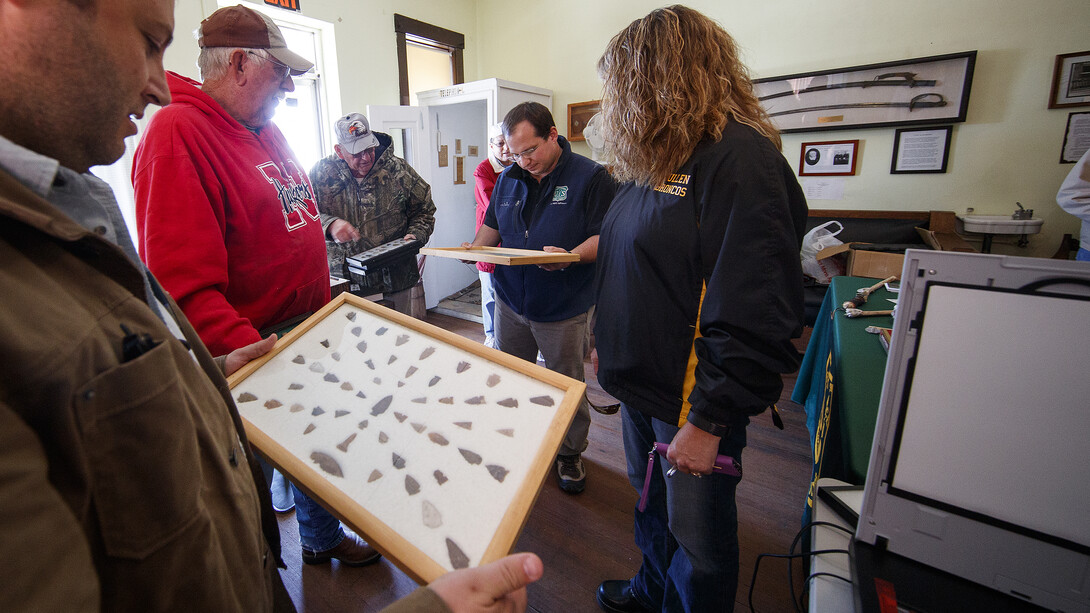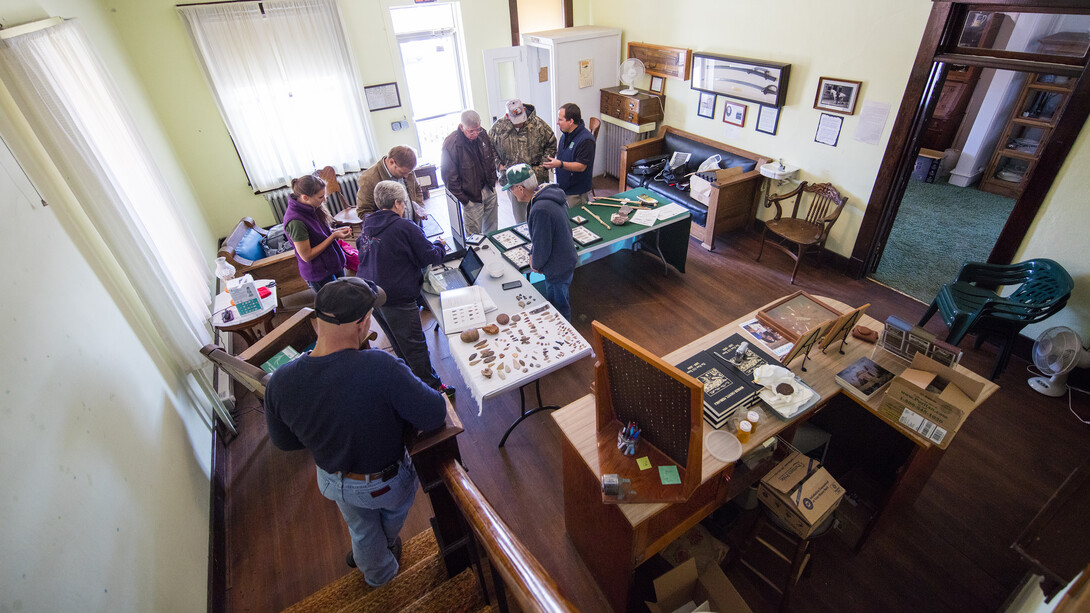
Robert Coble held a framed set of ancient history in his hands.
Carefully placing part of his ancient artifacts collection on temporary tables for review, the rural Nebraskan was one of more than a dozen who attended an Artifact Roadshow in the Hooker County Historical Society and Museum in Mullen on Oct. 7.
“I have more canisters and boxes at home, but I didn’t know how much you’d want to see,” said Coble, a rancher who lives near Mullen, to event organizers.
Dennis Kuhnel of the National Grasslands Visitor Center in South Dakota, a U.S. Forest Service employee, looked over Coble’s artifacts – all Native projectile points – then asked what Coble knew about the collection he had brought to the event. Coble said he’d done some reading and guessed a few were more than 5,000 years old. Kuhnel and Matthew Douglass, a lecturer in anthropology, filled Coble and the audience in on some of the ancient history of the Plains and Sandhills of Nebraska.
“Bow and arrow technology is only about 2,000 years old,” Kuhnel said. “Many people assume they just have arrowheads in their collections, but what they actually have are much older projectile points likely thrown from a weapon called an atlatle, which was used 10,000 years or more.”
Sharing of local information and ancient cultural resources between scientists and community members is the foundation for Artifact Roadshow. The series, now in its fifth year, is put on by the university and the Forest Service to educate the public about shared cultural heritage and to document the artifacts found in Nebraska lands and beyond.
The program has gained momentum to include about six shows per year. Events have been held in Nebraska, South Dakota and Wyoming, with plans to expand to Kansas, New Mexico, North Dakota and Oklahoma. Through the roadshows, thousands of artifacts have been scanned and digitally archived online for research and educational use.
“It kind of solves this dilemma that we have with professional archaeology: engaging with the public and explaining what we do, as well as educating about best practices and documenting finds from private property,” Douglass said.
The roadshows are also teaching tools. Many events are during annual summer field schools, so students learn about proper artifact collection and documentation, and how to interact with the public about anthropology and archaeology.
Douglass said most professional archaeology is done on federal lands, so reaching out to locals who have been on the land and have collected artifacts fills in many blanks for anthropologists.
“In the Sandhills, there are entire counties where we have no documented sites, but the locals know a ton of information,” he said. “If we can work together, we can learn all kinds of things.”
A challenge, though, is the many misconceptions about collection of artifacts, Kuhnel said. So education about proper artifact collection and storage is one of the roadshows’ main goals.
“This is a heritage and law education project,” Kuhnel said. “Long story short, on federal land, it’s illegal to pick up artifacts and collect them, but on private land, it’s legal. There’s a ton of confusion out there and there’s always been this disconnect and for years, no one was going to show these collections to federal archaeologists because there was this idea that they’d be arrested on the spot.”
At the Oct. 7 roadshow in Mullen, more than 500 artifacts were scanned.
Some, like Coble, had a sense of the historical value of what they brought for examination. Others, like Chuck Anders – who recently inherited his mother’s collection of artifacts – weren’t so sure going in.
“Some of these artifacts are as old as the Egyptian pyramids,” Anders said later. “I had no idea.”










